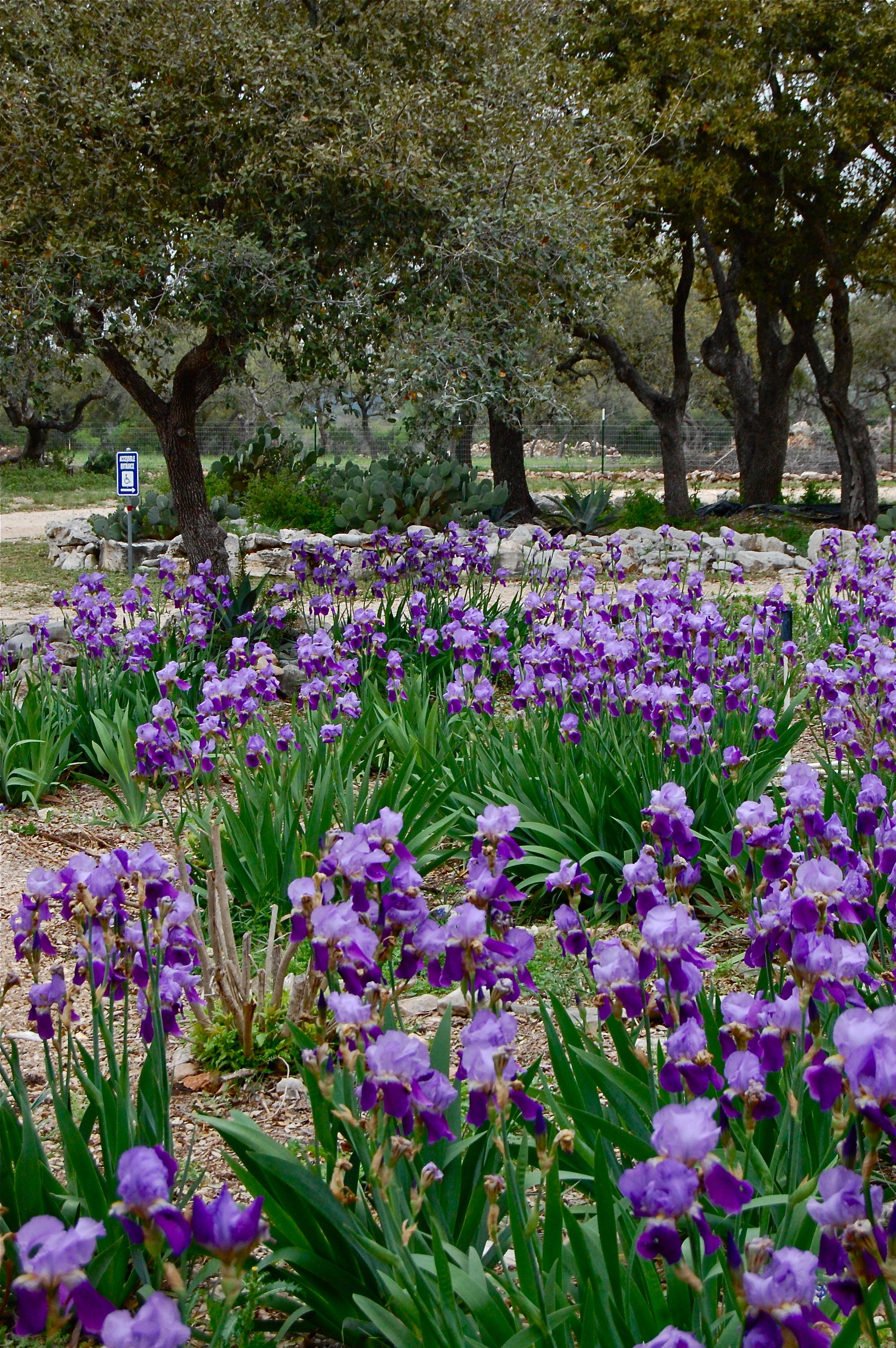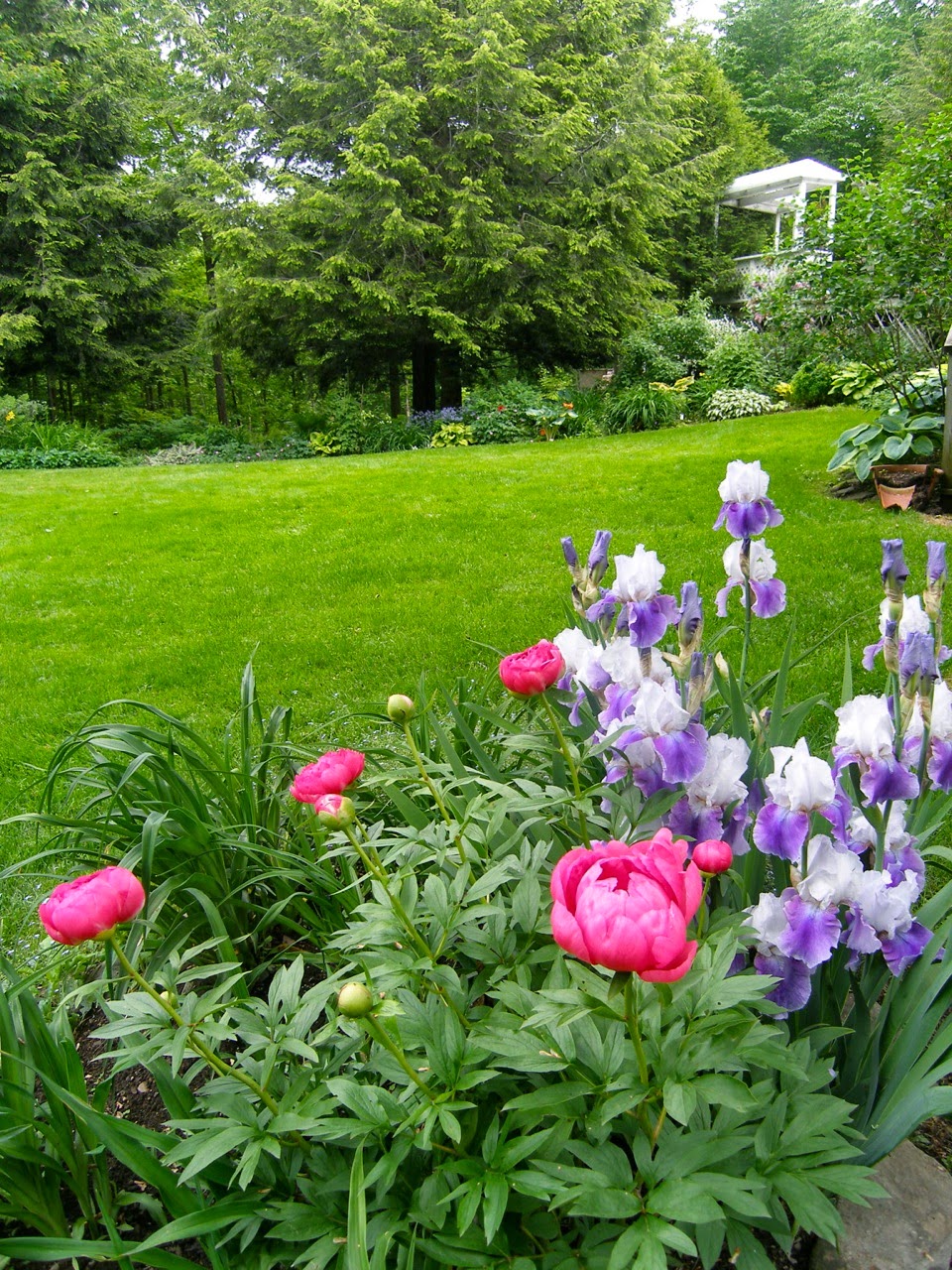.jpg)
FileIris (plant).jpg Wikimedia Commons
Where To Plant Irises require at least a half-day (6-8 hours) of direct sunlight. Some afternoon shade is beneficial in extremely hot climates, but in general irises do best in full sun. Iris will grow in deep shade, but probably not flower. Provide your irises with good drainage. A raised bed or planting on a slope are ideal places to plant iris.

Growing Irises All Season Long Garden Design for Living
Top tips from experts Iris of Sissinghurst on how to buy and choose an iris and where to plant irises. Do irises need sun or will they grow in shade? Can you.

World of Irises Swing Into Spring With Iris Garden Visits
The Spruce / Evgeniya Vlasova Bearded Iris Care The most popular of the irises, bearded irises are easy to grow provided you plant them in a sunny site with well-drained soil. A major departure for growing irises compared to other perennials is that they do not like mulch.
World of Irises "Talking Irises" THE BLUE IRIS GARDEN Planting A
Iris Overview Where to Plant Iris For the best bloom, plant iris in a sunny location. If your climate is on the hot side, some shade is acceptable. Almost all irises need well-drained soil but there are some species that prefer more moisture than others. The ideal soil for irises is slightly acidic but irises are quite adaptable pH-wise.

Connecticut Garden Journal Unusual Iris Connecticut Public Radio
Named after the Greek goddess of the rainbow, irises bring color to the garden in spring and summer. The vast majority are hybrids with the most popular being bearded irises. Other popular varieties include Siberian and Japanese irises, Louisiana irises which are native to North America, and Dutch hybrids.

Long Island Gardening Irises A colorful rainbow in the garden TBR
Irises is one of several paintings of irises by the Dutch artist Vincent van Gogh, and one of a series of paintings he made at the Saint Paul-de-Mausole asylum in Saint-Rémy-de-Provence, France, in the last year before his death in 1890.

How to Care for Iris Ensata (Japanese Iris) Home and Gardenia
Allow about 2 in (5.1 cm) of leaf to protrude from the ground so that the plant's roots do not have to expend energy to keep the leaf alive. Repeat with the rest of your Iris plants in your garden. Cut a 45-degree angle along the left and right sides of your trimmed Iris plants to create a fan shape.
World of Irises "Talking Irises" THE BLUE IRIS GARDEN Planting A
Quick Reference Growing Guide What Are Irises? A hardy herbaceous perennial, Iris is both the common and botanical name for this large genus in the Iridaceae family. These plants are beloved by gardeners for their colorful and fragrant flowers that bloom on tall, sturdy stems.
FileIrises in the Botanical Garden 02.JPG Wikimedia Commons
Iris the Flower: Name Origin and History. Iris spp. is the iris flower scientific name.The common name iris refers to one of the most abundant genera of flowering plants in the Iridaceae family.There are currently more or less 300 known species under the Iris genus (1). Other common names of this popular ornamental plant include flags (for some species) and junos (particularly those from the.

Linda Cochran's Garden Bearded Irises
December 4, 2023 Sign up for daily gardening advice and tips The tall, beautiful iris, named after the Greek goddess who rode rainbows, comes in many magical colors. Despite its divine origins, this beautiful flower is rugged, reliable, and easy to grow. Learn to plant and care for irises for long-term success in your gardens. About Irises
World of Irises "Talking Irises" THE BLUE IRIS GARDEN Planting A
They are popular in garden design and can be used in a variety of ways, such as in mixed borders, mass plantings, or accents. They are also well-suited for use in cut flower arrangements. Iris 'Conjuration' (Bearded Iris) Why should I Grow Iris Flowers? There are several reasons why you should grow iris flowers:
World of Irises "Talking Irises" TALL BEARDED IRISES COMPANION PLANTS
Plant border irises from late summer to autumn, or spring. Plant them so the top half of the fleshy root, or rhizome, is above ground and exposed to sun. Iris sibirica should be planted with the top of the rootball at ground level. Plant moisture-loving irises in spring, summer, or autumn.

World of Irises Beautiful Gardens with Irises in Every Climate
Use about ½ cup of 5-10-5 fertilizer for 6 small plants or about 1 cup for a large iris clump. In early fall, cut leaves 6 to 8 inches from the ground. All irises need mulch the first season after planting. Apply a light mulch of straw or evergreen boughs after the ground first freezes.
:max_bytes(150000):strip_icc()/siberianiris-56a303915f9b58b7d0d0109b.jpg)
9 Top Types of Iris for the Flower Garden
last updated March 30, 2021 Several varieties of iris plants ( Iris spp.) exist, providing intricate and exquisite blooms in sunny areas of the landscape. Iris flowers begin blooming in late winter to early spring. A range of varieties provides extended color in the flower bed. Iris care is minimal once the growing iris is established.

How to Grow Iris Growing and Caring for Iris Plants
Irises are best planted in early fall though they can be planted through to the start of winter. Prepare your border by digging in well-rotted organic matter - irises need fertile soil to produce the best blooms. Dig a hole around 5in deep per bulb and space each bulb 3in apart. This works for most irises but consult your bulb packet for.

a garden filled with lots of colorful flowers and greenery next to some
Gardening Tip Most iris varieties require periodic division of the roots. The bearded types are prone to iris borer worms, and many gardeners lift the rhizomes nearly every year, cut away damaged sections, and replant the roots. This also offers a good time to propagate new plants.